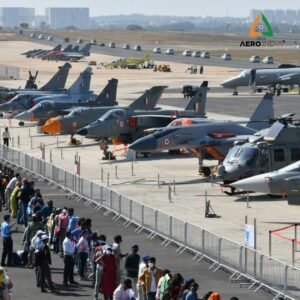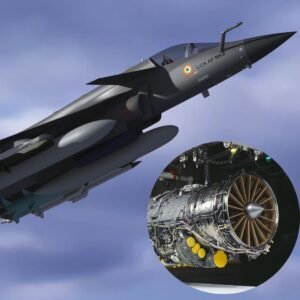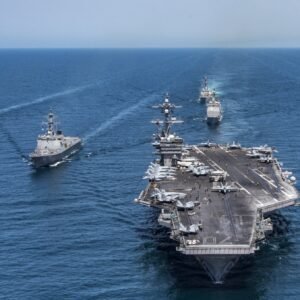Global Expenses on Arms: A Look at the World’s Top Spenders
The arms race has been an ongoing global concern for decades. Countries spend billions of dollars on defense every year, with many nations pouring significant resources into weapons, military equipment, and technology.
I. Effects of Ukraine War:-Global Military Spending Hits All-Time High Amid Rising Security Concerns In 2023
Global military spending has broken all-time records in the wake of rising security concerns around the world due to the Ukraine war. Institute (SIPRI) report- According to this, in the year 2022, the world military expenditure has reached a high level of 2.24 trillion dollars i.e. about 183 lakh crores. On an annual basis, it has increased by 3.7 percent. Europe’s military spending has increased by 13 percent and has reached Cold War-era levels. According to the report, global military spending has increased for the eighth consecutive year.

The increasing military expenditure shows that the tension in the world has increased and we are finding ourselves more vulnerable than ever. Ukraine’s military expenditure increased by 640 percent: According to the report, in the year 2022, Ukraine’s military expenditure increased by 640 percent to reach $ 44 billion. This is the biggest increase in a country’s military expenditure within a year. Ukraine is now spending 34 percent of its GDP on arms. Which is the highest ratio in the whole world.
Critical Decision Looms for Air Force Amid Surging Costs of Next-Gen Nuclear Missile
II. Global Expanse on Arms & Military Continuously Increases

A. Finland
According to the report middle and more of Western Europe’s military spent 345 billion in 2022 Dollar is done. Russia’s neighboring country Finland, Which has also become a member of NATO this month, has increased its military expenditure by 36 percent in the year 2022. At the same time, Lithuania’s military expenditure is 27 percent, Sweden’s 12 percent, and Poland’s Expenses increased by 11 percent.
B. Russia
Russia’s military spending increased by 9.2% Russian military spending in 2022 is projected to increase by 9.2 percent to around $86.4 billion Has gone. it’s from Russia’s GDP of 2022. equal to 4.1 percent, which was slightly higher than 3.7 percent in 2021.
C. India is spending $81.4 billion
In the year 2022, India’s military expenditure has increased to 81.4 billion dollars i.e. 6 lakh crores. This was 6 percent more than in 2021. China’s expenditure is four times more than that of India. China’s military expenditure is more than 24 lakh crores.
D. Pakistan forced to reduce military expenditure
According to the report, in terms of total military expenditure, Pakistan is at number 24 in the world with a budget of $10.3 billion. Pakistan’s military expenditure has decreased by about 2 percent in 2021-22, while Pakistan’s military expenditure has increased by 46 percent in the last 10 years.
III. Global Expenses on Arms: Overview 2020
The global expenses on arms have increased over the years, with countries allocating a significant portion of their budgets to defense. According to the Stockholm International Peace Research Institute (SIPRI), global military expenditure reached $1.98 trillion in 2020, a 2.6% increase from the previous year. This trend is expected to continue in the coming years, with geopolitical tensions and security threats driving countries to ramp up their military capabilities.
IV. Top Spenders on Arms in 2020
A. United States
The United States is by far the world’s largest spender on arms, with a military budget of $778 billion in 2020. This accounts for 39% of the global military expenditure, making it the dominant player in the global arms race. The US spends more on defense than the next ten countries combined, including China, India, Russia, and Saudi Arabia.
B. China
China is the world’s second-largest spender on arms, with a military budget of $252 billion in 2020. This represents 12.8% of the global military expenditure, a significant increase from the previous year. China’s military spending has increased by 76% over the last decade, reflecting its growing ambitions as a global superpower.

C. India
India is the world’s third-largest spender on arms, with a military budget of $72.9 billion in 2020. This accounts for 3.7% of the global military expenditure, making it a significant player in the Asia-Pacific region. India’s military spending has increased by 37% over the last decade, driven by its tensions with neighboring Pakistan and China.
D. Russia
Russia is the world’s fourth-largest spender on arms, with a military budget of $61.7 billion in 2020. This accounts for 3.1% of the global military expenditure, reflecting Russia’s ambitions as a regional power. Russia’s military spending has decreased by 7.1% over the last decade, reflecting its economic challenges and budget constraints.
E. Saudi Arabia
Saudi Arabia is the world’s fifth-largest spender on arms, with a military budget of $57.5 billion in 2020. This accounts for 2.9% of the global military expenditure, making it the largest spender in the Middle East. Saudi Arabia’s military spending has increased by 61% over the last decade, reflecting its ambitions to counter Iran’s influence in the region.
Conclusion
Global expenses on arms continue to rise, with countries investing significant resources in their military capabilities. The world’s top spenders on arms, including the United States, China, India, Russia, and Saudi Arabia, have different motivations for investing in their military capabilities, ranging from national security to global influence.
As the arms race continues, it is essential for countries to consider the long-term implications of their investments in defense. While military spending can provide short-term security and strategic advantages, it can also divert resources away from other critical areas, such as healthcare, education, and infrastructure. Moreover, increased military spending can exacerbate geopolitical tensions and fuel arms races, creating a vicious cycle of aggression and instability.
It is important for countries to balance their military spending with investments in other critical areas, as well as engage in diplomatic efforts to reduce tensions and promote peace. Only through collaboration and dialogue can we build a more stable and secure world for future generations. many countries are hidden and don’t show on media news with your deadly weapons.













